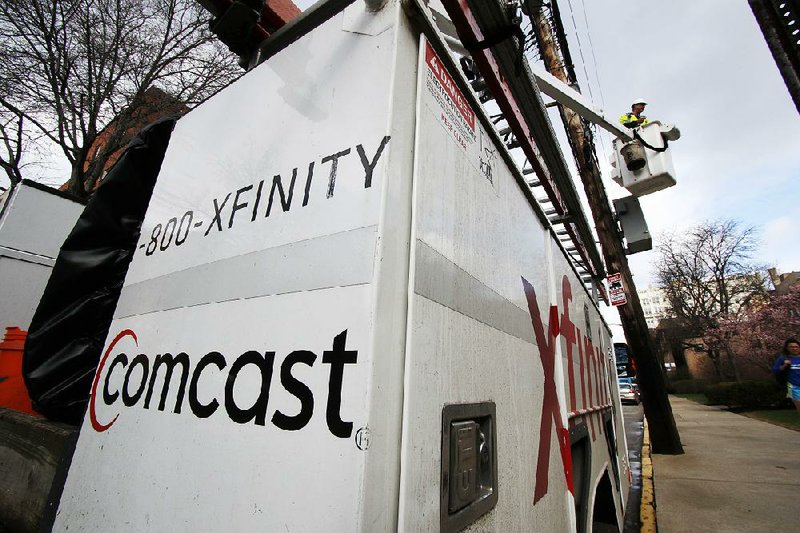NEW YORK -- Cable TV company Comcast added customers last year for the first time in a decade. But on Thursday it posted its biggest quarterly cable-customer loss since 2014.
Research firm MoffettNathanson predicts that industrywide, traditional video subscriptions fell 3.4 percent in the third quarter. That would mean that people ditched their cable TV subscriptions at the fastest rate since online streaming started eating into cable's business.
Partly to blame in the July-September quarter were the hurricanes that struck Texas and Florida, damaging poles, wires and other infrastructure and interrupting service for millions.
But Comcast and other cable and satellite TV companies also say competition from online sources of video is taking a toll.
Comcast is still making more money per customer, however.
Comcast video customers fell 125,000 in the third quarter, echoing trends from rivals AT&T and Verizon. AT&T's traditional TV customers dropped 385,000, while Verizon posted its third-straight quarter of video losses. If Verizon has a negative number for the year, it would be the first time since it started up a cable business over a decade ago.
Netflix has been streaming video for a decade, and Hulu almost as long. But there's been a burst of original content from those services -- Hulu picked up cachet with an Emmy for its original series Handmaid's Tale in September -- as well as on Amazon. HBO and other premium channels are available without any cable subscription.
And there's now a plethora of cable replacement services that stream traditional TV channels, live, and cost less than traditional cable. The latest started in April (YouTube TV) and May (Hulu's version). Analysts estimate that these online versions of cable have picked up a few million customers in the past 2½ years.
Prices are substantially lower than they are for traditional cable. Google's YouTube TV costs $35 a month and includes a DVR and many popular networks (no CNN, TBS, HGTV or Discovery Channel, though); Sling starts at $20. AT&T is discounting its DirecTV Now to $10 for customers with unlimited AT&T wireless plans.
Comcast is offering some cheaper, skinnier packages, but isn't going to "chase unprofitable video subs," said Comcast cable executive Matt Strauss at a recent investor conference.
Comcast added 214,000 broadband customers, down from 330,000 in last year's quarter. That was also hurt by the storm.
Still, the company's average revenue per customer rose 2 percent, to $151.51, from a year ago. Customers are taking more services, like DVRs, and Comcast raised its prices.
New Street Research analyst Jonathan Chaplin expects that Internet prices in particular are going to rise across the industry.
On a call with analysts Thursday, Chief Executive Officer Brian Roberts said that "as the market for video shifts," Comcast's "broadband business is increasingly the epicenter of our relationship with customers and ultimately where we derive the majority of our profitability." He said Comcast is committed to video.
In Comcast's NBCUniversal unit, the bonanza from last year's Olympics weighed on this quarter's results. Revenue dropped 13 percent to $8 billion. The company said that when results are adjusted to exclude the Olympics, revenue from its cable networks and broadcast networks, NBC and Telemundo, both rose. Films were flat, and revenue from theme parks grew nearly 8 percent to $1.55 billion.
Overall, the Philadelphia company's net income rose 18.5 percent to $2.65 billion. Revenue fell 1.6 percent to $20.98 billion.
Shares slipped 56 cents, or 1.5 percent, to close Thursday at $36.27.
Business on 10/27/2017
